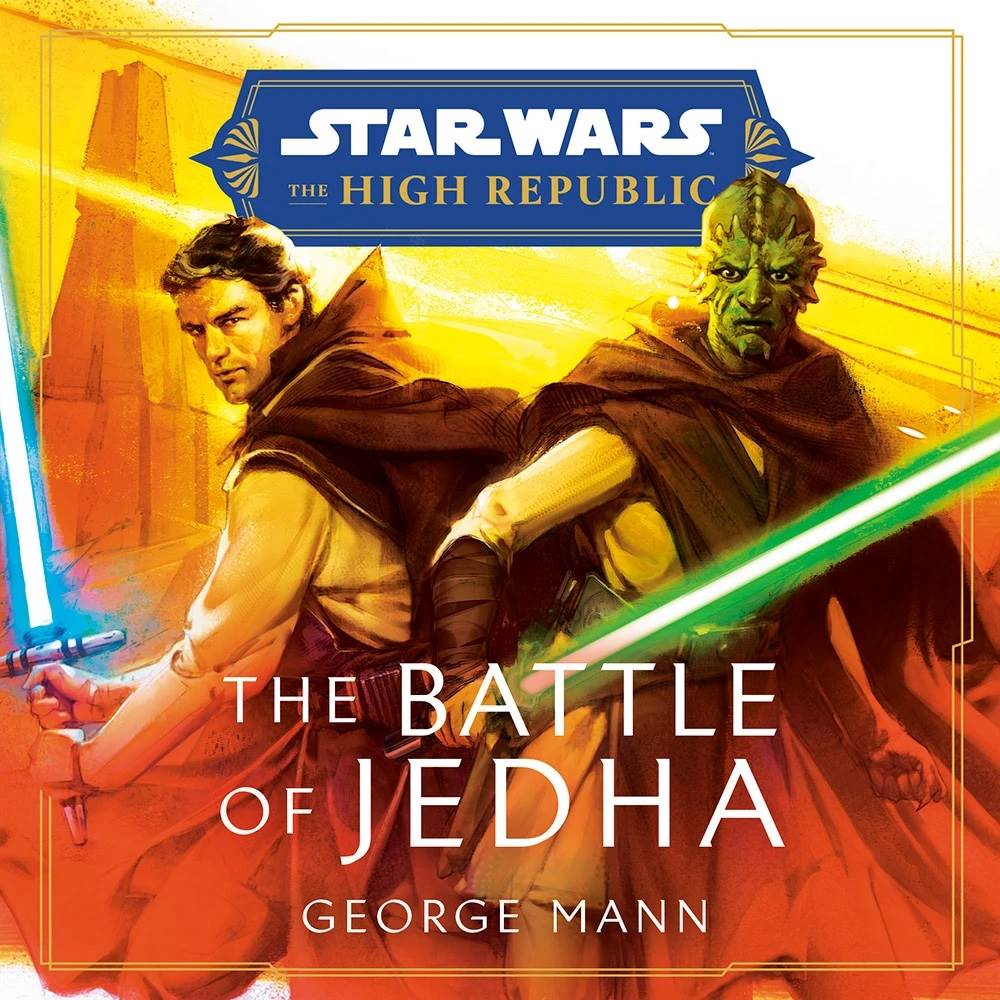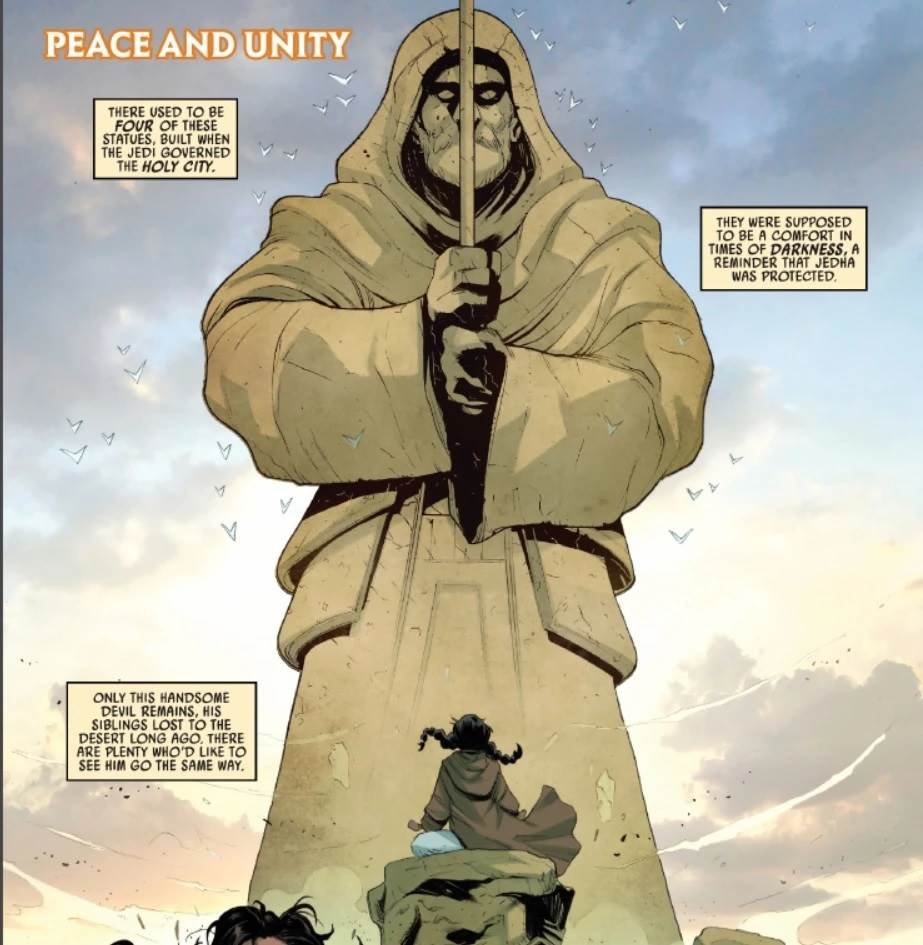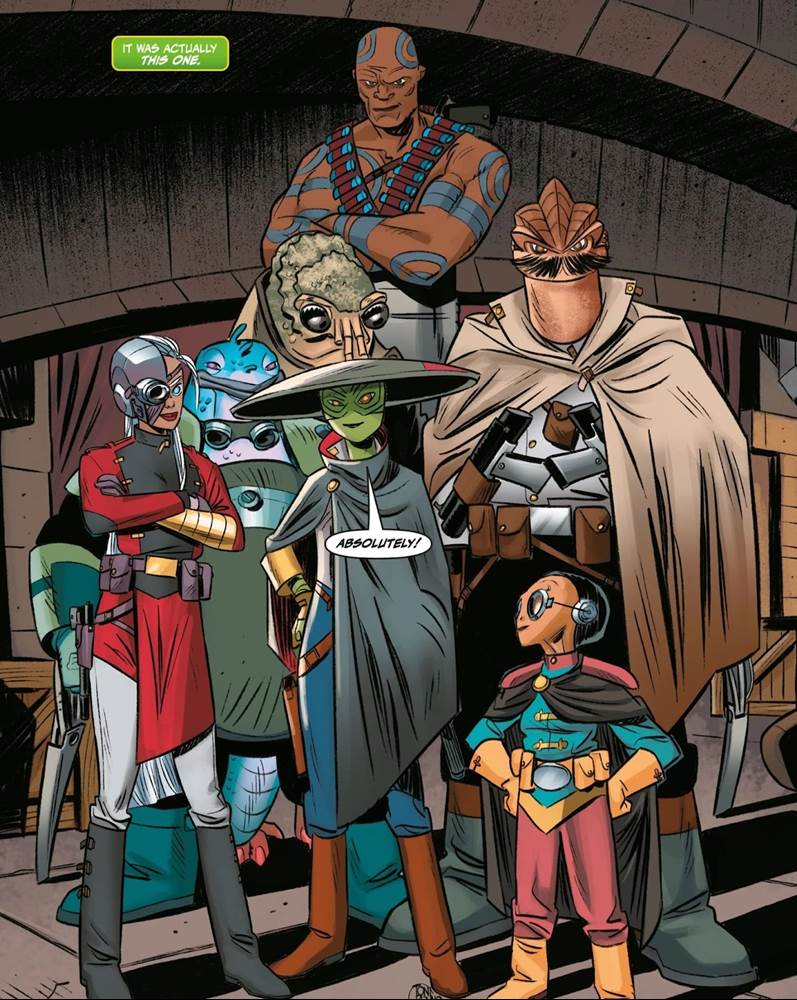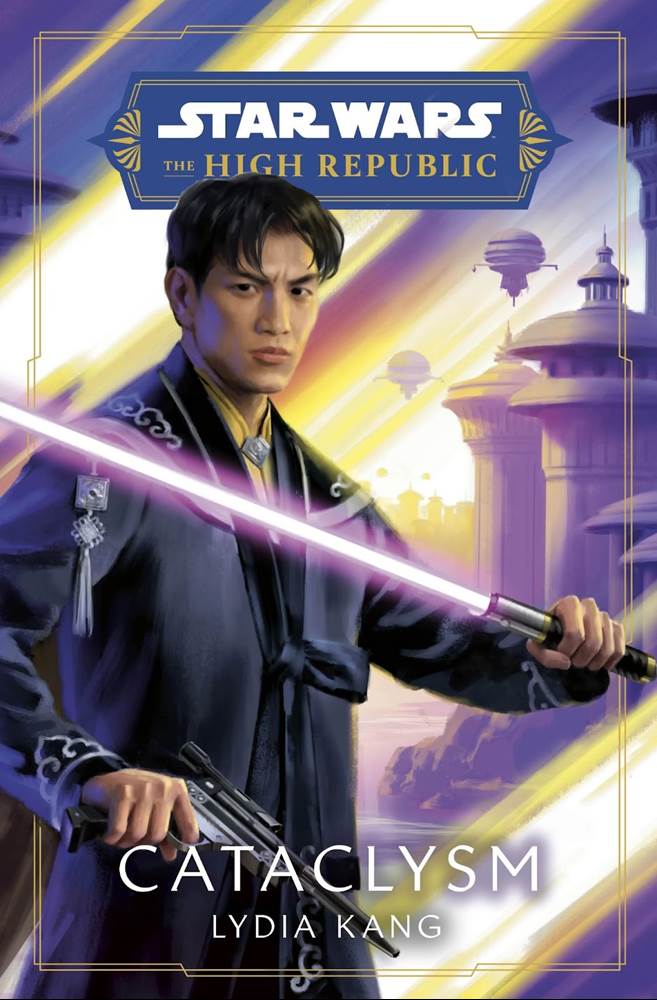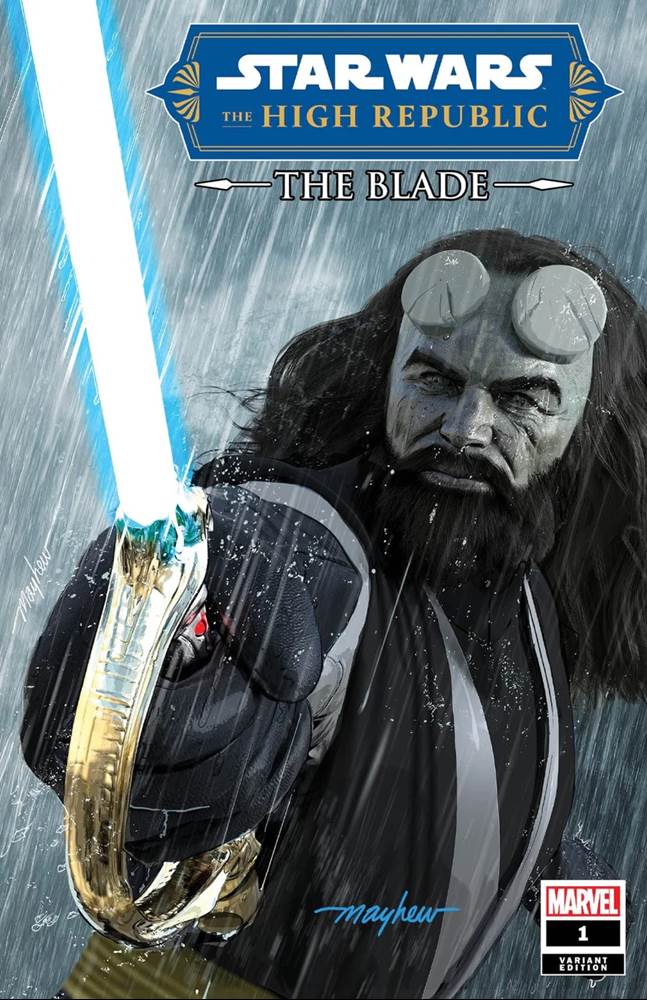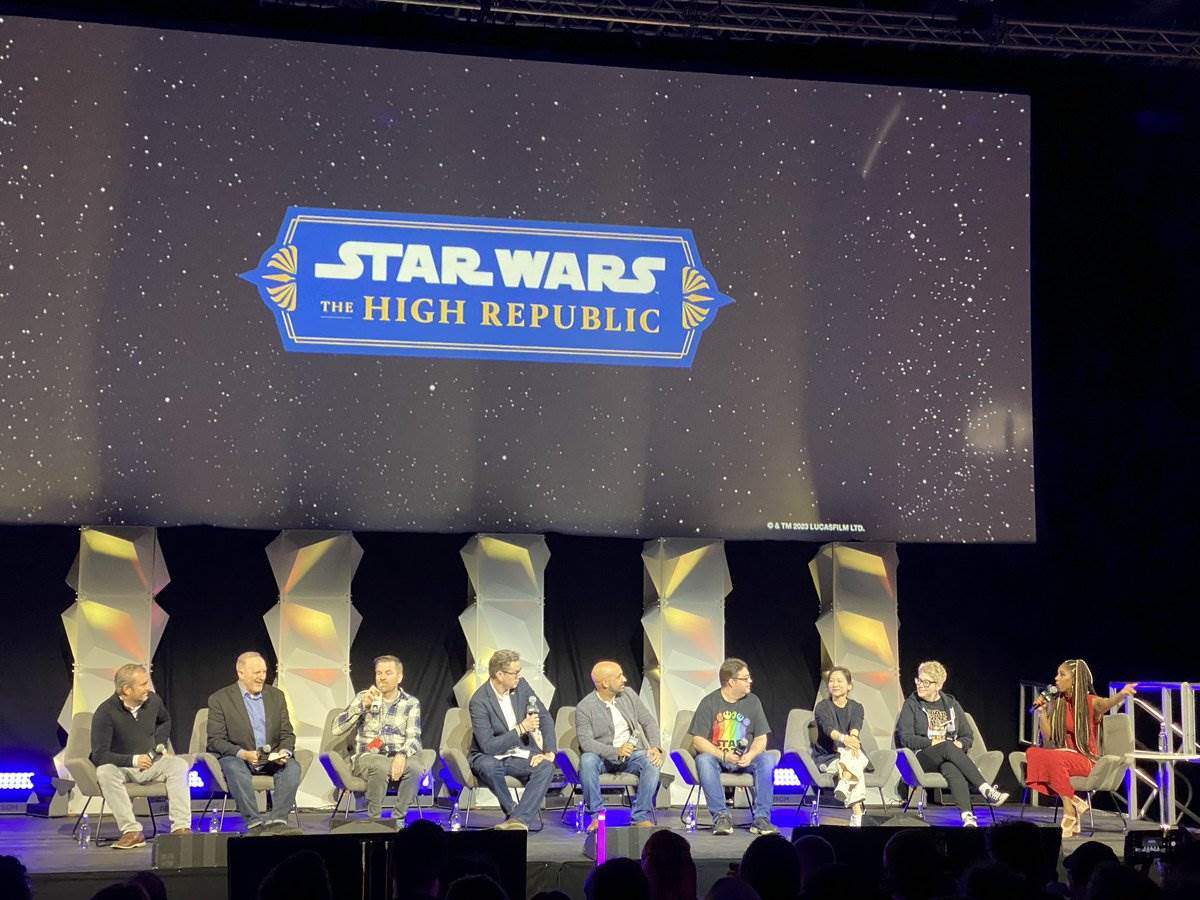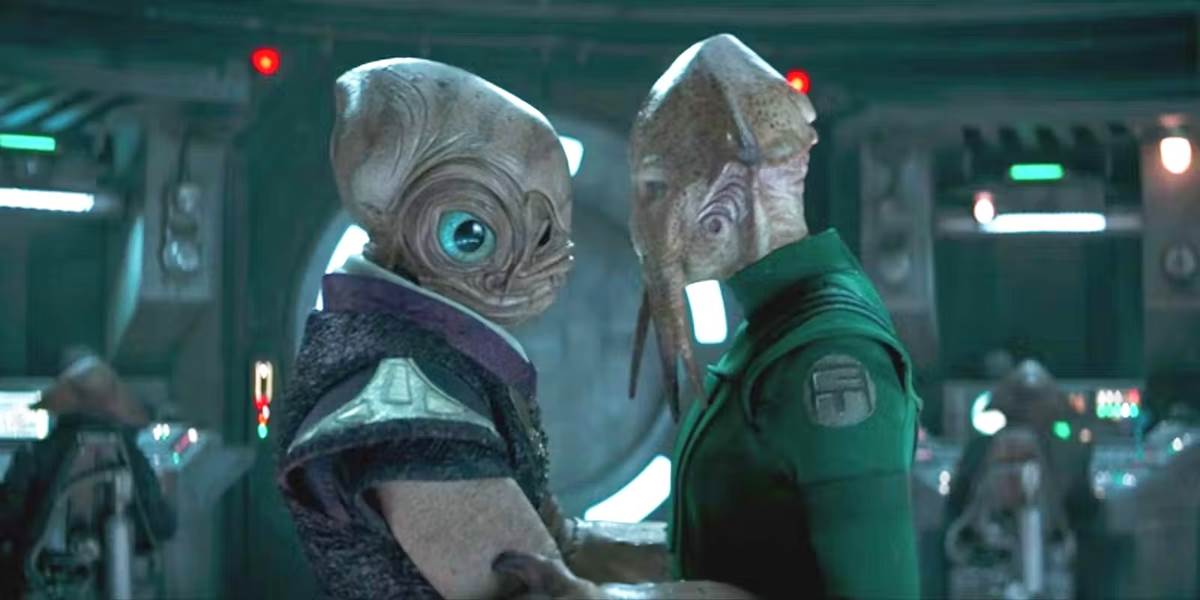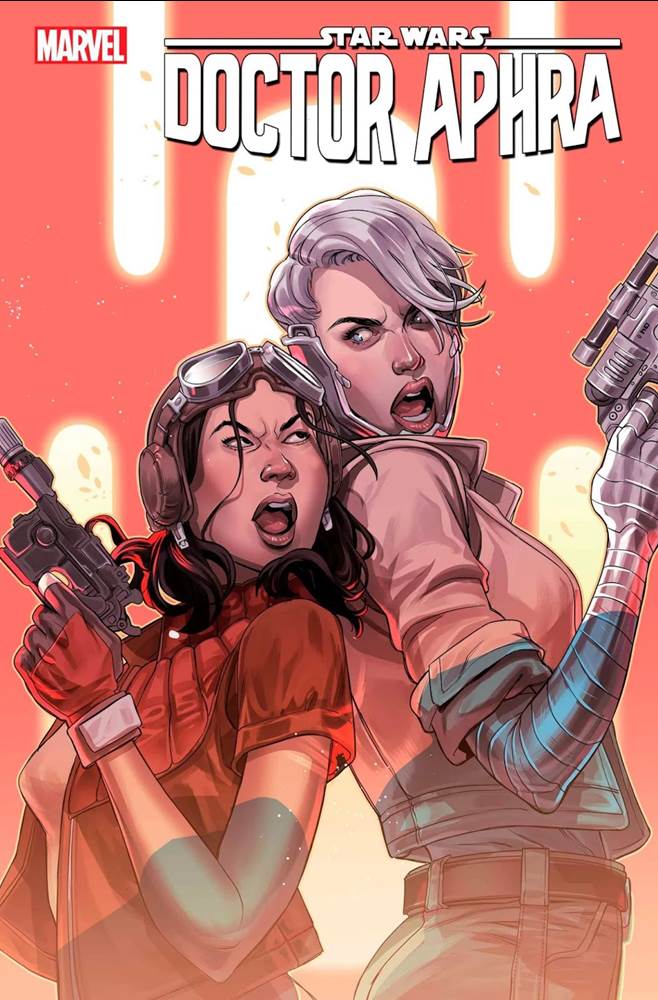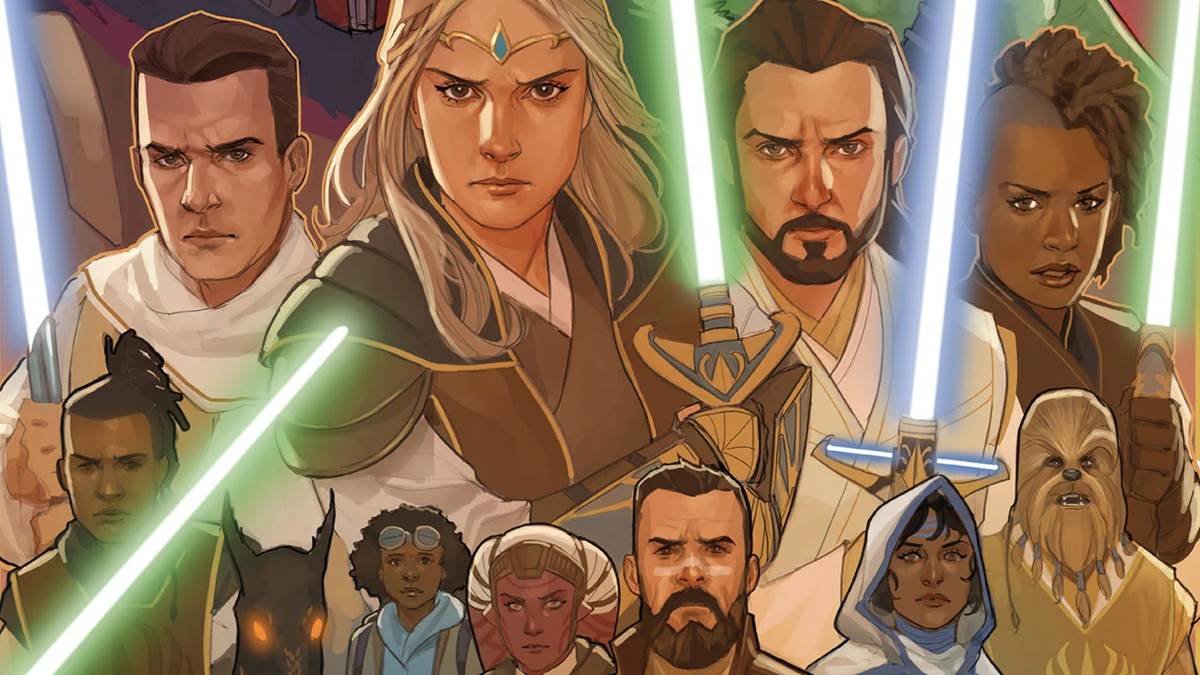Interview: “The High Republic” Authors Debrief Phase II of Lucasfilm’s Publishing Initiative at Celebration Europe 2023
Continuing our series of interviews conducted at Star Wars Celebration Europe 2023 in London last week, I once again had the wonderful opportunity to sit down for a roundtable discussion with the authors behind Lucasfilm’s ambitious multi-platform publishing initiative Star Wars: The High Republic.
Present for the interview– which was conducted on the morning of Friday, April 7th, just before Star Wars Celebration officially began– were The High Republic authors Claudia Gray, Lydia Kang, George Mann, Daniel José Older, Cavan Scott, Charles Soule, and Alyssa Wong, plus Lucasfilm Publishing’s creative director Michael Siglain. The full audio version of this interview, transcribed below, can be found in the 150th episode of Laughing Place’s Star Wars podcast “Who’s the Bossk?"
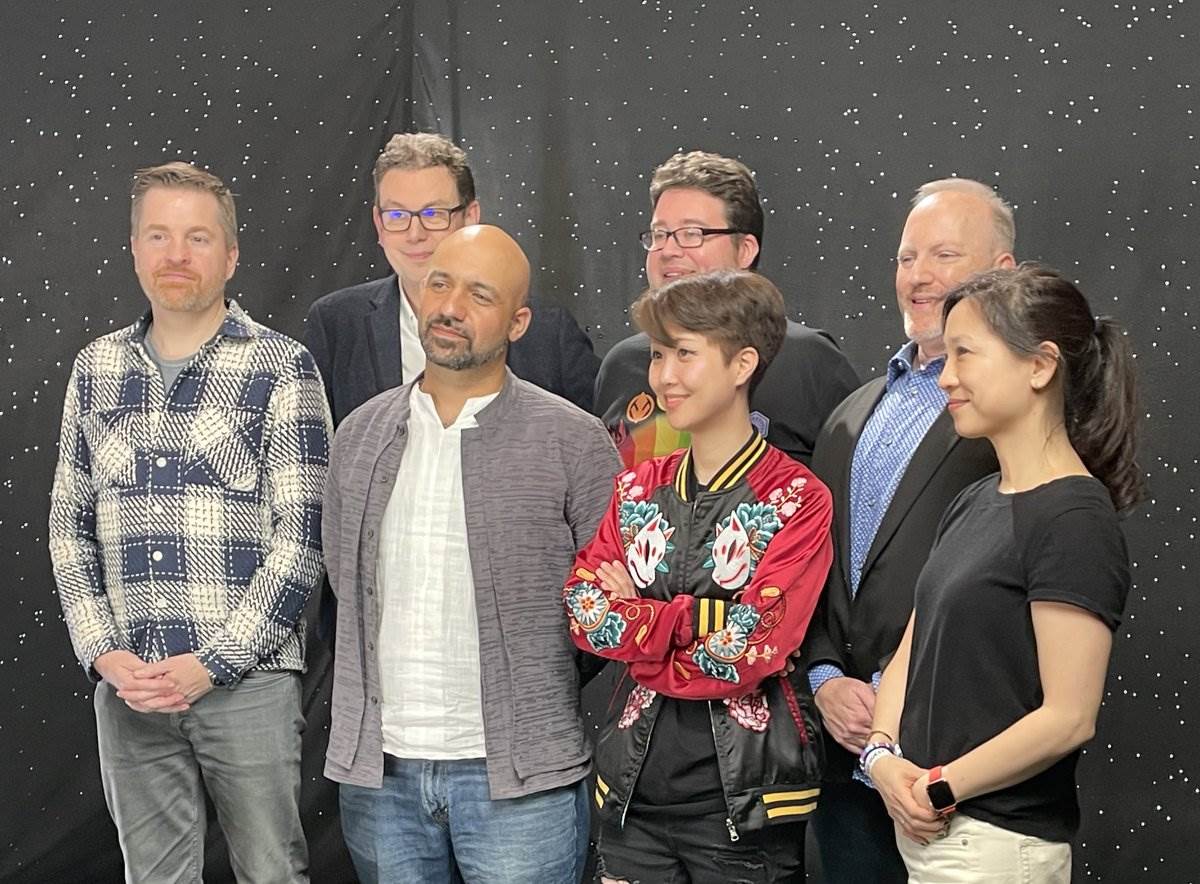
Photo by Melissa Lee, Disney Communications
Mike Celestino, Laughing Place: I would love to start with Claudia Gray. Your release Quest of the Jedi is not out yet, so I’d like to ask you about your role as a Story Architect for The High Republic. What did that mean for you during Phase II?
Claudia Gray: In all honesty, Phase II I’m mostly getting to enjoy more as a fan. The architecture– the overall thing that we all worked together to build at the beginning– was an amazing collaborative process where all of us got to talk about all the different things that we love and we want to see in Star Wars, to help build this. With Phase II, I did Quest of the Jedi, which is very much a standalone piece. It is connected to the larger story; it delves into the mystical side of things. Jedi mysticism is one of the things that has interested me the most about Star Wars period, my whole life. Or at least since Empire, when you get Yoda getting us into that. So getting to really concentrate on that was fantastic for me.
LP: For George Mann, I’ve listened to The Battle of Jedha audio drama a couple of times, and I think it’s really thrilling. How much input do you actually have on the recording process and performances for something like that, and what was your reaction when you finally got to hear the finished product?
George Mann: Well, it’s amazing hearing it come to life– giving voice to characters that have been living in your head for months is incredible to hear. We don’t have a lot of input into the [recording process]. We do it through the script, really, so it’s about the intentions of the scene. The writing in audio is very much a collaborative process, because although you can sit and read the script [in printed form], you really are writing the script for the actors. That’s why we put the atmosphere bits in it and the sound effects, which is just to give a little bit of direction to the team that are making the audio– where to put the important sound effects and how to help set the tone of the scene for the actors, so they know what to do. But you’ve got to leave a lot of room for the actors to interpret the lines that you’re writing for them. While you might have it one way in your head, how a scene might play out, it might play out differently when you actually hear it, because the actors have interpreted those characters slightly differently or put their own spin on them. So it’s cool as a fan, to then come back to it and say, ‘Alright, okay. They’ve gone in this direction with that character.’ And it’s surprising, sometimes, but a great experience.
LP: For Cavan Scott, I haven’t had a chance to read Path of Vengeance yet, but I’d like to ask you about Marvel’s The High Republic comic book– specifically the fall of the Final Protector, which is this giant statue of a Jedi Knight that we saw on the ground in Rogue One. How did you decide that The High Republic was the right place to tell this particular story, and how did you arrive at the choice of having something actually be underneath it?
Cavan Scott: We discussed that in our second visit to [Skywalker] Ranch. That second week was when we really delved into Phase II, and focused on what the story for [that would be]. We were talking about Jedha right from the off on that, and as soon as you talk about Jedha, relating to the Jedi, you want to know why that statue’s on its side. And as for why things are inside it or underneath it… it’s the Raiders [of the Lost Ark] fan in me. It’s delving into hidden tombs and that kind of thing. As [exemplified in] things like Dooku - Jedi Lost, I’m fascinated with artifacts. I’m fascinated by the mysticism thing– for me it’s all about the Sith and the Jedi history. I’m an Old Republic fan, and so any chance I get to have a big archive of doomed material that shouldn’t be there, I will put it somewhere. And why not put it in a giant statue that everyone can see every day, because everything’s always in plain sight.
LP: For Daniel José Older, I feel like it’s been a good year for pirates in Star Wars. Can you tell me about putting together Maz Kanata’s crew for The High Republic Adventures, and what is it about Sav Malagán as a character that makes her want to fit in so badly with that crew?
Daniel José Older: Every year is a good year for pirates. [laughs] You know, I really wanted to tell the story of outsiders that find each other, and that’s so much of what pirates is– the pirate life, you know? And for good or for bad; we see all the different colors of that and shades of that, what that could mean. But for Sav, she never fit in as a Jedi, but she’s one of the best, and she’s in that rebellious teenage period, and that involves– as I recall– sneaking out of your house and finding a bunch of pirates to run off with. And so that was the story I wanted to tell… I wanted to start it with that moment of her sneaking out and then finding this family of people that might be the death of her, but also might help her find who she is. That’s the adventure.
LP: For Lydia Kang, I loved Cataclysm. You did an amazing job of bringing all of Phase II’s narratives together and executing the climax for this part of the story. How did you go about diving into Path of Deceit, Convergence, and The Battle of Jedha and tying together all those various threads in your novel?
Lydia Kang: It was really complicated; it was really really challenging. It was maybe one of the most challenging things I’ve ever had to do in a book, because there were so many storylines to wrap up, and they had to be done with a lot of care. I had to make sure that where they had been before, they now continue on that arc, and everybody had their own journey in a way that landed okay. So it was very difficult; there were many boards with multicolored Post-It notes and rearranging, and things like that. It was just really satisfying when we finally felt like we got everything down, but I don’t think I’ve ever written a book that had this many main characters before in my life. [laughs] But it was also fun, because the whole time you’re doing it, you get so involved with everybody and what they’re going through, and you start making them suffer. [laughs] It’s difficult, but necessary. It was a fantastic experience– so much fun.
LP: For Charles Soule, with The Blade, I’m curious if this was the backstory you had in mind for the character of Porter Engle from the beginning, or is this something that evolved after we first got to know the older version of him in Phase II? And how did Barash Silvain come about as his counterpart?
Charles Soule: I knew from the beginning, when I first made up Porter– if you do a close read on him in Light of the Jedi, you can tell there’s clearly something in his background. He’s one of those jolly guys who that’s a bit of a mask for him, like there’s something in his background that he’s not super thrilled about, that he’s dealing with. So when Phase II showed up as a flashback situation, it seemed like a really good opportunity to fill in some of that, and let the readers understand a little bit of what he’s lost, and why he does have that darkness inside of him that he’s trying to deal with– not literal dark-side darkness, but like a shadow. There’s a trauma to him; he’s a trauma survivor, basically. I didn’t know the specifics of it… I didn’t know that they would go to Gansevor. When I first made him up, I didn’t know that he had a sister, I didn’t know that it was Barash, I didn’t know that the story that I would tell in The Blade would be where the Barash Vow comes from. But when I realized I was going to be telling the story in Phase II, I’m like, ‘Well, what are the things I can do here that would be really interesting?’ And the idea of giving him somebody to play off, somebody that he lost, seemed like it was a really interesting way to go.
LP: For Michael Siglain, we’re conducting this interview before your big The High Republic panel at Star Wars Celebration, but without spoiling anything I wonder if you can give us an idea of how excited we should be for what you have planned, and everything that’s coming up in Phase III?
Michael Siglain: Very. [laughs] Extremely, yeah, because I think we have more reveals on our High Republic panel than any other panel at Celebration… and they are some pretty big reveals. We’ve always said from the very start that we’re playing the long game, and you get to see a little bit more of that in Saturday’s panel.
LP: A question for everybody– I’ve noticed a recurring theme lately in Star Wars of star-crossed lovers. That popped up in this week’s The Mandalorian episode “Guns for Hire" and there have already been examples of star-crossed lovers in The High Republic, between Eiram and E’ronoh and the warring cities on the planet Gansevor. What is it about this very Shakespearean idea that has adapted itself to Star Wars so well?
Scott: I think Claudia should answer this one. [laughs]
Gray: I mean, romance as a storytelling medium I think gets a bad rap right now. Everybody’s like, ‘Oh, it’s about putting this pretty person near another pretty person, and that’s what it is. But it isn’t. The storytelling trope of romance is about the reconciliation of opposites and the overcoming of conflict. That’s the core of the romance that hooks in all of us, and when you have a galaxy this big and this complicated, you get to find these areas of conflict. Again, you get to see the things that ought to be irreconcilable, and you want to reconcile them through this emotion. It’s a very powerful way of communicating– if these two individuals are able to make this bridge, then the greater forces that of course are underlying the main story arc, there are possibilities there for reconciliation and for understanding. When it’s done right, and I feel like there’s been some really great romantic stuff done in The High Republic, I feel like it really does give you this very personal and immediate emotional connection to the bigger sources of conflict and difference that underlie this era and this story.
Siglain: There’s another way you could say it, too, which is that sex sells. [laughs]
Scott: Which is why we asked Claudia to answer that question. [laughs]
Kang: We don’t like anything that comes easy. When it’s more difficult, it’s that much more satisfying when things get resolved. That happens in [both] romance and galactic warfare. That’s good story-writing.
Mann: And real life. It’s a reflection of–
Soule: It’s reflective of this entire initiative. [laughs]
Scott: But it is the coming together of all of this, isn’t it? Through the fire of The High Republic, it’s how the relationships are forged, and that’s what we’re seeing.
[Note: at this point I realized / remembered that writer Alyssa Wong was also at the table, though she had not yet been announced as contributing to The High Republic. Siglain allowed me to ask her a question about the Doctor Aphra comic book before I wrapped up.]
LP: What’s coming up for Doctor Aphra?
Alyssa Wong: That’s a really good question. [laughs] It’s funny you asked about star-crossed lovers, because the thing I’m always really interested in with a character like Aphra is, ‘Can she fall in love? Can she learn to be vulnerable enough to fall in love?’ and ‘If so, what’s that gonna cost her?’ and ‘If not, what is that also gonna cost her?’ So again, I’m always interested in finding out how much pain people are willing to go through in order to get the thing that they really want, and if that is the thing that they actually really want. I guess it’s weird to be like, ‘Aphra, expect pain! But also maybe romance.’ There’s been that slow-burn with Sana for at this point probably like 25 issues or so, so expect that to pop off.
Siglain: Sex sells. [laughs]
After Phase II concludes this spring, Star Wars: The High Republic will continue with Phase III in the fall.




